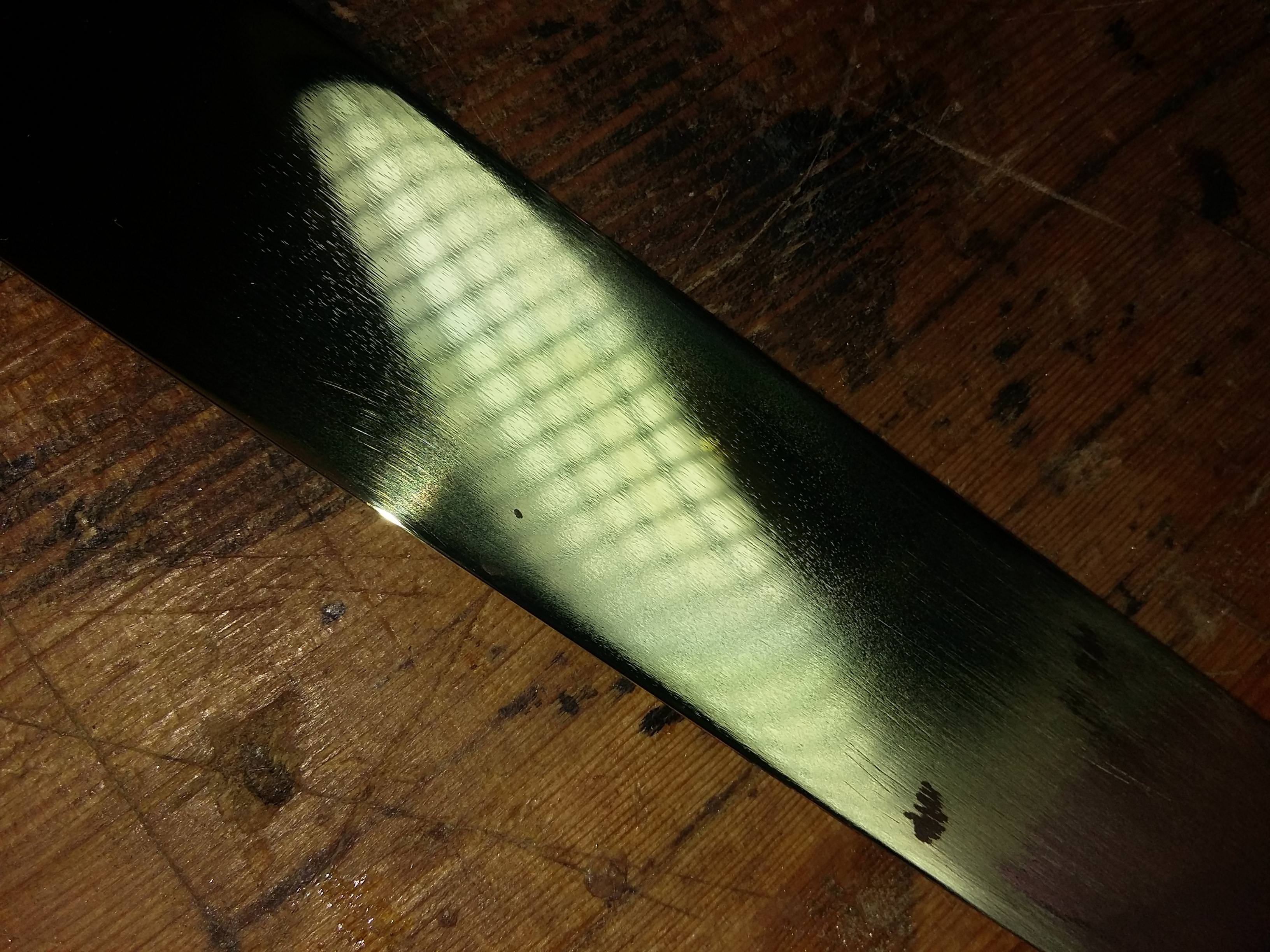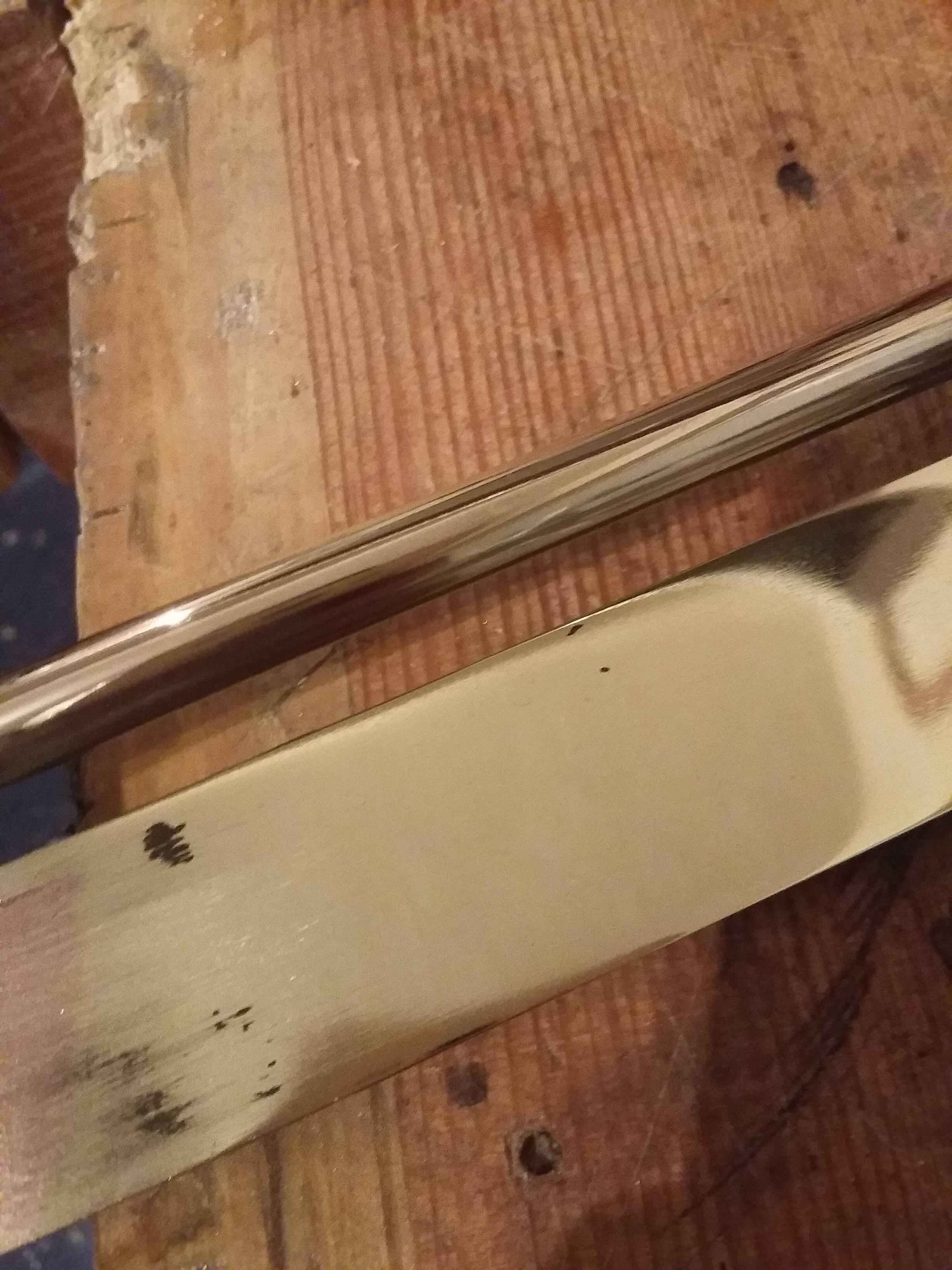Would anyone be able to tell me why I'm getting this strange pitting when I've buffed brass?
I sanded starting at 80 up to 1000 alternating stroke direction 90 degrees each time. Then moved onto buffing, loose mop thing pink compound then rouge on different mop.

I buffed a brass rod using same steps and it seems to have come out better

Perhaps using a more solid felt wheel would be better?
I sanded starting at 80 up to 1000 alternating stroke direction 90 degrees each time. Then moved onto buffing, loose mop thing pink compound then rouge on different mop.

I buffed a brass rod using same steps and it seems to have come out better

Perhaps using a more solid felt wheel would be better?

































